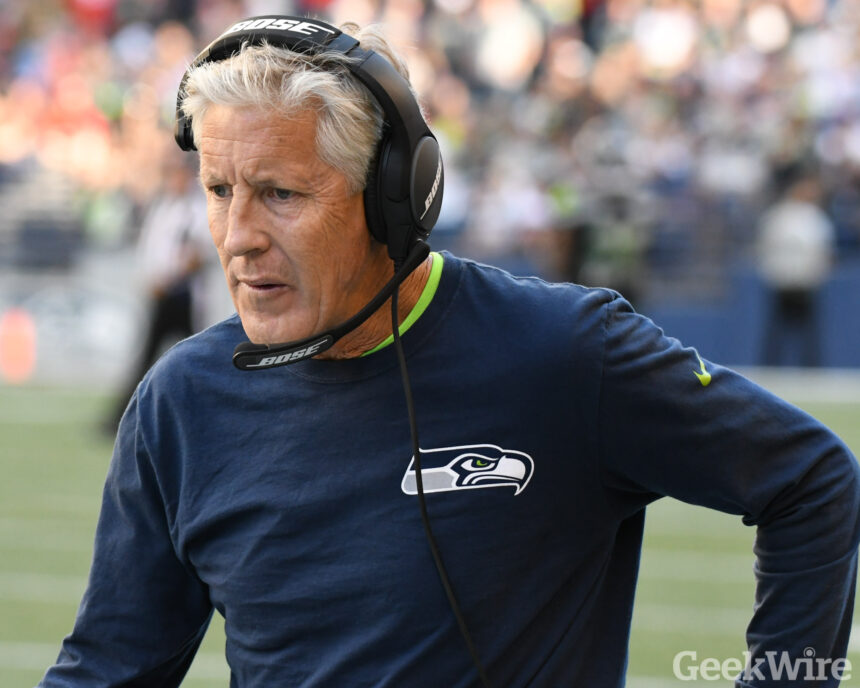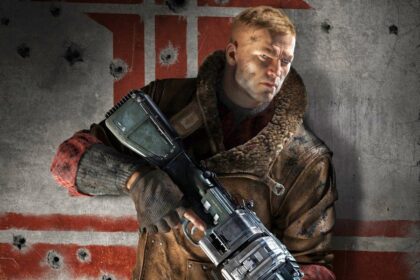There’s been a lot of chatter heading into the new NFL season about how artificial intelligence will be an innovative new sideline tool for coaches and players, thanks to the league’s partnership with Microsoft.
We checked back in with the NFL to clarify just how AI can and will be used during games, just to make sure humans and not chatbots will still be the deciding force when it comes to calling plays. And along the way it made us want to revisit one of the most painful plays in Seattle Seahawks history — sorry!
First, the NFL stresses that its Sideline Viewing System, with a new GitHub Copilot feature from Microsoft, is mainly a filtering tool for the sideline and booth Surface tablets used by players and coaches. The filtering function connects play data to still images, allowing users to rapidly reach a category or subsection of plays for review.
Copilot is also enabled in analytics devices used in the coaches booth, where teams have access to specific game data within a “bespoke build” of Microsoft Excel. The Copilot function offers a sounding board to check the accuracy of formulas and generate visualizations, according to the league.
Here’s more nitty-gritty from the NFL regarding the use of tech:
“The technology tools coaches use on game days are primarily governed by the NFL’s electronic device policy which states that only league-issued technology can be used by team staffs on sidelines/the coaches booths (prohibiting devices like smartwatches, cellphones, and personal computers). Club committee guidance informs the approval process of what is league-issued. Our committees of coaches, front office executives, and owners have historically focused on innovations that serve all clubs equitably and emphasize enhancing processes over determining in-game outcomes. Through our Microsoft partnership, we feel AI can streamline these processes, but cannot be a substitute or supplement for coaches developing adjustments and strategies on game day.”
So while you might be using AI to craft your next clever work email, or your kid is using it to cheat on his math homework, NFL coaches won’t be using it (yet) to decide whether to pass or punt on 4th and five.
But that doesn’t stop us from using AI to second-guess — or at least revisit how the internet summarizes all the second-guessing.
And there’s no bigger play in Seattle football history to revisit than the play that cost the Seahawks a second Super Bowl title 10 years ago.
If you don’t pay attention to football, or time has successfully erased that memory, it’s the play where the Seahawks were trailing 28-24 against the New England Patriots in Super Bowl XLIX. There was 26 seconds left in the game. It was 2nd-and-goal at the 1-yard line, and the Hawks had one timeout remaining.
Rather than hand the ball to running back Marshawn Lynch, Seahawks coach Pete Carroll opted for a pass play, and quarterback Russell Wilson’s throw was intercepted. Game over. Dynasty denied.
The Seahawks have a new coach now and the team has come a long way from not being back-to-back world champs. But AI is such a hyped commodity now it makes sense to use it for its take on that play, and much like the human analysts, fans and players who have dissected Carroll’s decision, AI wishes he would have run it to Lynch, too.
Here’s the prompt we fed to OpenAI’s ChatGPT-5 and Google’s Gemini 2.5:
Should the Seattle Seahawks have run the ball with a chance to win Super Bowl XLIX against the New England Patriots?
Both bots do a good job of quickly generating the facts around the play and analysis of Lynch’s power in such a situation. The bots then offer arguments for why running the ball and passing the ball both could have made sense.
But the “verdict” from ChatGPT and the “conclusion” from Gemini both lean toward Lynch and the run.
“In hindsight — and even at the time — running the ball was the higher-percentage play,” ChatGPT said. “The risk of an interception on a short slant in a crowded goal-line situation didn’t justify the potential reward. It remains one of the most second-guessed play calls in NFL history.”
“In the end, while the play call was strategically justifiable, especially in a worst-case scenario, the immediate result — a game-ending interception — made it seem like a monumental mistake,” Gemini said. “The universal consensus among fans and many analysts is that, given the talent and the game situation, the Seahawks should have simply run the ball.”
As the NFL kicks off a new season, and AI becomes even more ingrained in certain aspects of team decision making, here’s to hoping Seattle fans have reason for more positive prompts about future play calls.
Read the full article here









